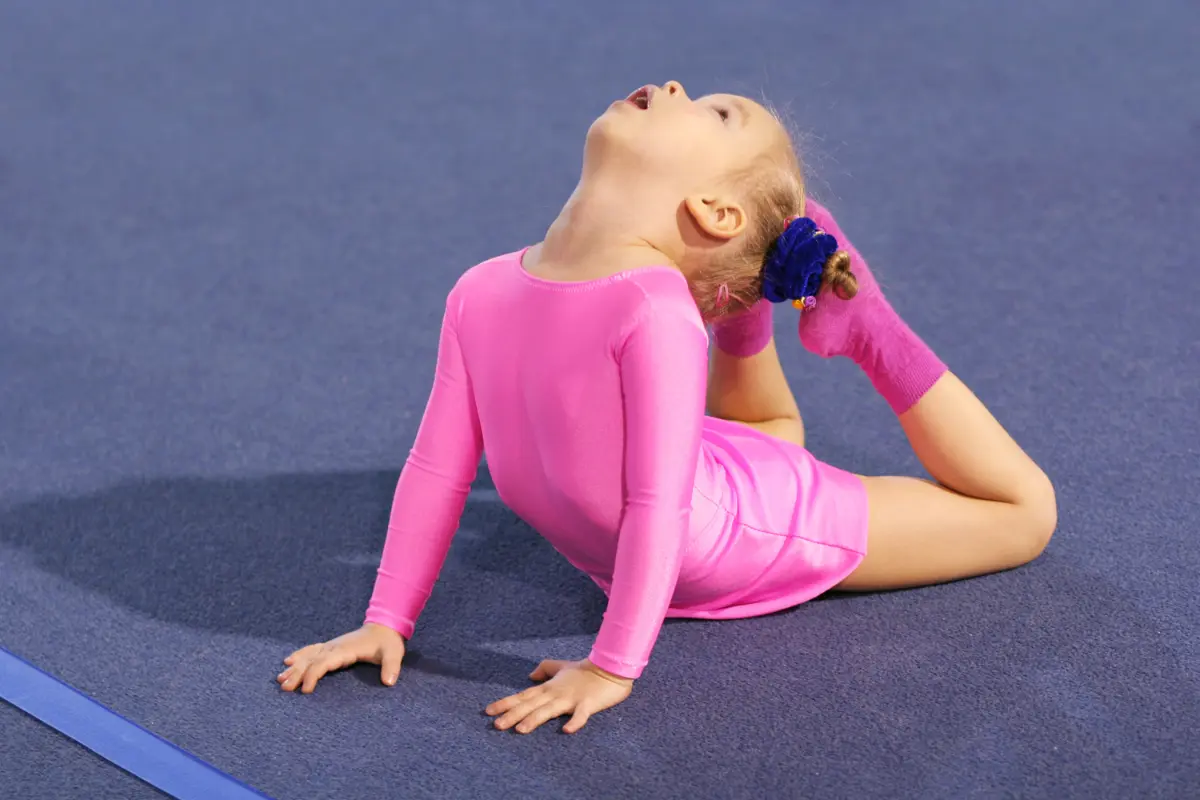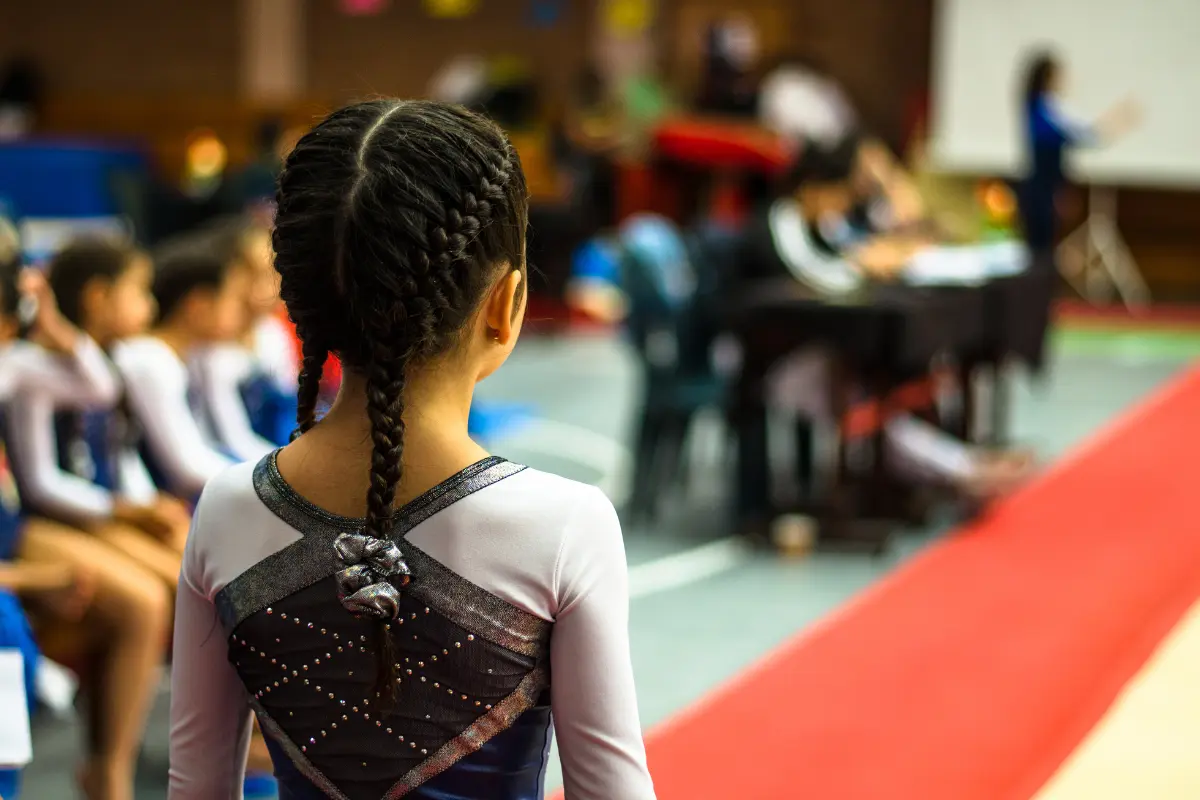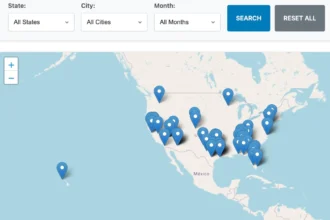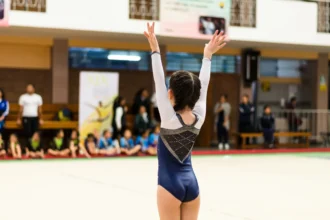Gymnastics takes a mix of things: flexibility, strength, balance, timing, bravery, and a touch of creativity. But kids don’t develop all these skills at the same time.
Starting too late can make it harder to build the flexibility needed for skills like splits and backbends. On the other hand, starting too young, especially with too much intensity, can lead to overuse injuries or burnout.
Experts agree that ages 2 to 7 are a key time for learning body control. Skills like handstands, rolls, and cartwheels come more naturally during this stage because children’s brains and bodies are especially ready to absorb movement patterns.
Developmental Phases & Training Sweet-Spots
Ages 3–5: Preschool Years
At this age, gymnastics is all about fun and movement. Classes often include parent participation and focus on simple activities like animal walks, obstacle courses, and tumbling. The goal is not perfect skills, it’s building coordination, confidence, and joy through play. Because young kids have short attention spans, sessions should stay light, upbeat, and full of variety. (Source: Emeth Gymnastics)
Ages 5–7: Early School Age
This is often the ideal time to start structured gymnastics. Kids can follow instructions, focus for longer, and their bodies are still naturally flexible. They begin learning shapes, rolls, jumps, and basic swings with clearer coaching cues. Many experts call this age the “sweet spot” for entry into organized gymnastics. (Source: Gold Medal Gymnastics Center)
Ages 8–10: Refinement Years
Now, many gymnasts move into team programs and compete at beginner levels like Level 2–4. They start working on strength, clean form, and consistency. Kids this age are better at taking corrections and their bodies are still flexible enough to master more advanced skills safely.
Ages 11–14: Pre-Adolescence
Training gets more serious. Gymnasts may start learning optional routines, building power, and developing strength through carefully planned workouts. With growth spurts common in this stage, coaches need to monitor training loads, but gymnasts begin showing real maturity and understanding of technique.
Ages 15 and Up: Teens & Adults
It’s never too late to start. Older beginners often find success on events like vault, bars, and floor, where power and strength matter most. They may struggle more with extreme flexibility, but with smart, scaled progressions and good coaching, teens and adults can thrive. The rise of Olympic gymnasts in their 20s shows just how far smart, consistent training can go.
Official Age Rules You Should Know
If you’re curious about when gymnasts can officially compete, here are the basics:
- U.S. Development Program (Women’s Artistic):
Gymnasts can enter Level 1 as young as age 4. Level 4 requires a minimum age of 7, and Level 8 requires age 10. Athletes must reach the required age during the competition season. - FIG Elite Eligibility (World & Olympics):
To compete internationally, gymnasts must turn 16 in the competition year for women, and 18 for men.
These rules show why elite-bound athletes usually need to start structured training in early elementary school. But for recreational gymnasts, there’s more flexibility, and more time.
The “Sweet Spot”: Why Ages 5–7 Are Often Ideal
Ages 5 to 7 offer the perfect blend of attention span, coordination, and natural curiosity. Kids can focus well enough to take corrections, and their joints are still flexible and forgiving. Plus, they still enjoy imaginative play, making gymnastics fun, not stressful.
Most kids do well with two classes per week, around 4 to 6 hours total. This builds strong basics without putting too much strain on growing bones. Soviet-era training logs support this approach, showing young gymnasts started at 8 hours per week, but only after they’d mastered foundational movement.
The key is balance: enough structure to build skills, but not so much that it steals the joy.
Early Specialization—Blessing or Curse?
Gymnastics is known for early starts—many elite athletes begin intense training by age 9 (AOSSM). But early specialization comes with risks. Training one sport year-round before puberty has been shown to double the risk of overuse injuries and increase burnout.
Even in regular club settings, injury rates can be high: about 1.8 to 2.5 injuries per 1,000 training hours. Piling on extra repetition too soon raises those risks even more.
That’s why experts recommend letting kids try different sports, like dance, swimming, or martial arts, until at least age 10. This keeps training fun, builds all-around motor skills, and helps kids stay mentally refreshed and injury-free.
Starting Later: Paths That Still Work
Not everyone starts gymnastics at age 4—and that’s completely okay. There are plenty of ways to get involved at any age:
Recreational & Xcel Programs:
USA Gymnastics’ Xcel program and community classes welcome beginners of all ages. These programs build strength, flexibility, and confidence without the pressure of strict routines.
High School & NCAA Gymnastics:
Many college athletes didn’t start until middle school. With strong focus and smart coaching, some become walk-ons and contribute to teams—especially on events like vault or floor where power matters most.
Adult Gymnastics:
Adults can absolutely train gymnastics. It takes patience, but with the right progressions and a focus on strength, many adults find the process fun, empowering, and safe.
Practical Tips for Parents and Coaches
- Test the Waters Early, Specialize Later
Let kids explore movement at 3–4, but hold off on intense year-round training until at least 5–6. - Keep Hours Age-Appropriate
A common rule: no more than double the child’s age in weekly training hours (e.g., 8 hours/week for an 8-year-old). - Mix It Up
Use off-seasons or breaks to cross-train with swimming, dance, or martial arts to keep joints healthy and minds excited. - Look for the Right Coach
Coaches trained in age-appropriate progressions and positive motivation make a bigger difference than a flashy gym. - Check for Joy
If your child stops smiling or starts complaining of constant aches, it’s time to reassess. Long-term love for the sport is worth more than early medals.
In summary, there’s no single “perfect” age to start gymnastics, but beginning between ages 5 and 7 often gives kids the right mix of focus, coordination, and flexibility to build strong basics. Still, it’s never too late to start. With the right approach and support, gymnastics can be a rewarding journey at any age.






